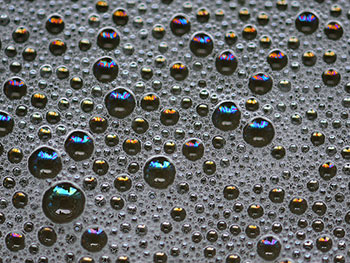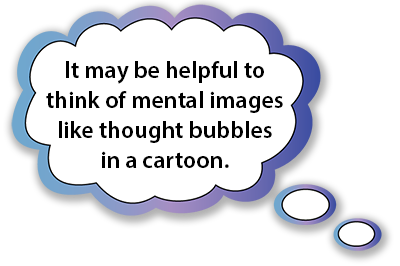
Source: Big Bang Theory, Nick Kidd, Flickr
Imagery is the use of language to create mental images and sensory impressions. Writers use imagery for emotional effect and to intensify the impact on the reader. In the upcoming sections, you will explore sensory impressions and emotions, but first you will study how figurative language can create mental images.

Think about the meanings of the following figurative phrases, and then click each phrase to reveal a statement that explains its meaning.

You would probably agree that the phrase, “I’ve told you a million times to clean your room!” has a much stronger emotional impact than a more literal sentence such as, “I have told you four times to clean your room.” When you hear the literal statement, you may be tempted to assume that your parent is not yet tired of repeating the command to clean, but the figurative phrase conveys a level of impatience that is not present in the literal example.
By explaining the emotional impact of the figurative language above, we have just made an inference about its meaning. Let’s practice making inferences, or logical guesses made by connecting bits of information, about one of the other figurative statements. Which of the following is the better inference about the emotional impact of the second statement, “He has a heart of gold”?

Authors may use various types of figurative language, and the examples above demonstrate four of those different types. Now look again at the same examples and try to identify what types of figurative language they are by studying the definitions of each term. Drag and drop the examples you studied above to the terms and their definitions. This time the underlined words in the examples can help you.

Good job! Once you are able to identify the different types of figurative language and to make inferences about their use, you can apply these skills to your study of poetry and other types of literature.
Read the following poem by Scottish poet Robert Burns and identify the figurative language by clicking to highlight. You should find three separate examples.

 Let’s make some inferences about why the poet uses these three figurative devices. As you complete the chart below, use your notes to determine the type of figurative language device the phrase is using and the effect of each example. Notice that the effect statements should include evidence from the text. Then click for possible responses. The first one is done for you.
Let’s make some inferences about why the poet uses these three figurative devices. As you complete the chart below, use your notes to determine the type of figurative language device the phrase is using and the effect of each example. Notice that the effect statements should include evidence from the text. Then click for possible responses. The first one is done for you. 